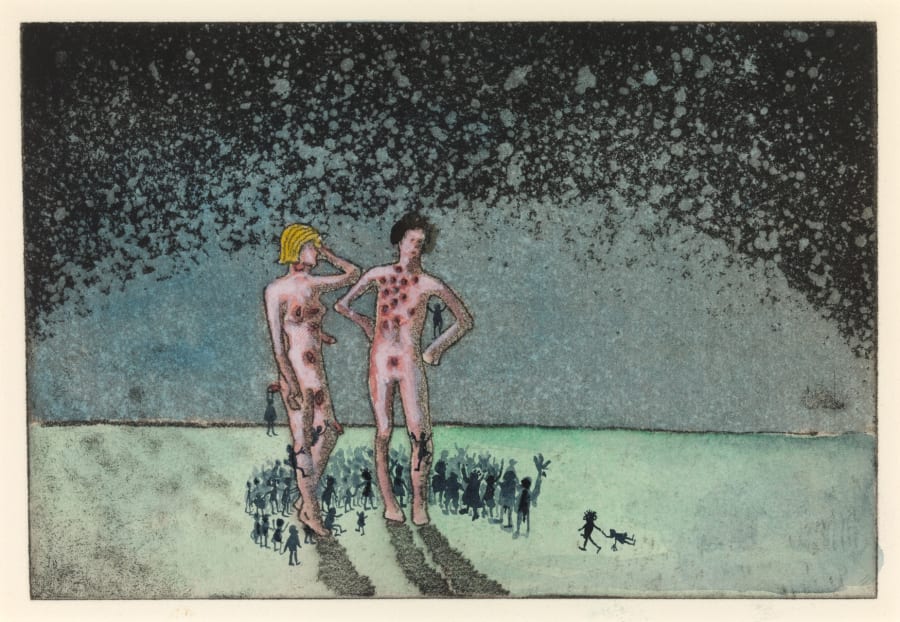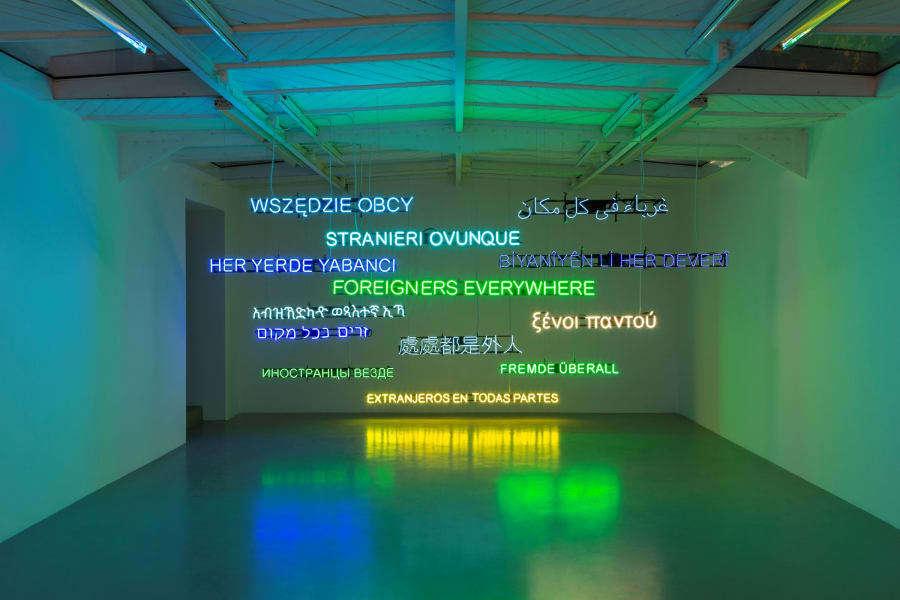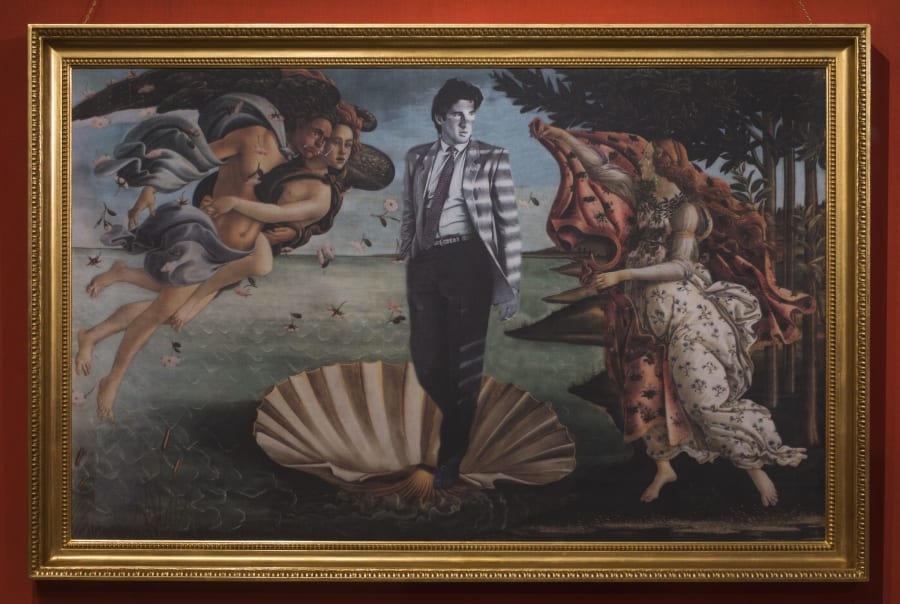‘I wouldn’t say I’m ambitious but I am certainly very driven about being able to represent India’s crafts correctly,’ says Karishma Swali, the creative director of Mumbai’s storied textile and embroidery house Chanakya International. Founded in 1984 by Swali’s father, the company’s master artisans, some representing 13 generations of an inherited profession, are known for creating painstakingly intricate textiles coveted by the likes of Gucci, Loewe, Prada, Yves Saint Laurent, and Christian Dior. Swali’s first involvement with Chanakya was in 1995, when at the age of 18 she was sent to Italy with her brother to visit Italian couture houses. The links between both countries have since become entrenched in Chanakya’s business model, with ateliers and showrooms in Mumbai and Bologna, and techniques traded between them. Swali founded the not-for-profit Chanakya Foundation in 2008 to continue building bridges across geographies and disciplines through projects connecting art, craft, and fashion. ‘Cosmic Garden,’ a collateral exhibition at the 60th Venice Biennale, curated by Maria Alicata and Paola Ugolini at Salone Verde, is the foundation’s latest venture.
In another edition of the Venice Biennale with no official Indian pavilion, ‘Cosmic Garden’ exemplifies how Chanakya is forging new creative possibilities for Indian artists and artisans both at home and internationally. The exhibition foregrounds a collaboration with the iconic Indian artist couple Madhvi and Manu Parekh, both known for drawing on Indian traditions and folktales to create paintings and sculptures that fuse modernist and craft forms. Works by the Parekhs are presented alongside their hand-embroidered translations by the Chanakya School of Craft, a non-profit institute co-founded by Swali and Monica Shah in 2016 to both preserve and innovate India’s rich textiles heritage through the training of female artisans in a traditionally male-dominated field.
Swali describes ‘Cosmic Garden’ as ‘an organic development’ from an earlier project. A long-time collector of the Parekhs’s work, Swali spearheaded the reimagining of their vibrant paintings by 320 master artisans into 22 colossal hand-embroidered artworks that lined the runway of Maria Grazia Chiuri’s 2022 autumn-winter haute couture collection show for Dior, bringing India’s syncretic culture to the Musée Rodin in Paris. The imagery – a combination of folk symbology, depictions of the goddess Kali, and abstract references to festivals – was created from a variety of organically colored jute, raw linen, cotton, and silk threads, reflecting both the Parekhs’s and Swali’s shared commitment to preserving India’s artistic traditions. ‘It is a glue between us,’ says Manu, whose background in textile production coupled with Madhvi’s knowledge of embroidery, provided a foundation upon which their collaboration with Chanakya unfolded. ‘The way as painters we use colors, is the way artisans use threads with different textures,’ says Manu. ‘The hand holds the brush as well as the needle,’ Madhvi continues.
The appreciation of skilled craftsmanship is what connected Swali to Chiuri, who was head of accessories at Fendi when Swali first met her shortly after joining Chanakya International. ‘Since then, there hasn’t been a single season we haven’t worked together,’ Swali recalls. Chiuri, who joined Dior as the creative director of womenswear in 2016, describes her relationship with Swali as ‘a source of continuous exchange for ideas and projects relating to embroidery as a central design element and process rather than a superficial technique.’ As a testament to this enduring relationship, Dior presented its pre-fall 2023 collection, with clothes embellished by the Chanakya artisans, at the Gateway of India in Mumbai, in front of a toran, an ornate hanging of patchwork fabrics conceptualized by the Chanakuya School of Craft along with the Chanakya Atelier. ‘It was so well received in India’, says Swali. ‘It was almost like the country was celebrating with us because craft is personal for every Indian in a way.’
Swali has spent considerable time building up documentation of India’s craftsmanship, traveling state by state to record the myriad techniques that exist, from kantha, a quilting technique from West Bengal, to chikankari, characterized by fine threadwork, from Lucknow. ‘I decided to dedicate my time to really being able to decode craft, to be able to innovate within it and find perhaps a new language that is more contemporary but always rooted,’ Swali explains. The Chanakya School of Craft, which is supported by Chanakya International’s luxury textile business, extends this mission. ‘I realized that crafts hadn’t been institutionalized and it became important to tell a story in a way that had appeal beyond the fashion sector,’ Swali says.
The school supports and equips women, typically from underserved and low-income communities, to learn design skills and an array of hand-embroidery processes, such as macramé and the metal-based zardozi, through a free 18-month training program with an attached honorarium. So far, just under 2,000 students have completed the 18-month curriculum. In a context where typically males practice as artisans, Swali sees the school’s role as providing ‘creative expression and financial freedom.’ The syllabus, devised by Swali, is pegged to female icons including Frida Kahlo and Sarojini Naidu, a poet and politician appointed India’s first female state governor post-independence. Modules eschew the normalized hierarchy between craft and art, with lessons blending tradition with design, art history, entrepreneurship, and healthcare.
Chanakya’s cultural center, attached to the school, feeds into its educational activities. The space houses the ‘Living Museum,’ a platform for rotating exhibitions of the school’s collection of over 10,000 historic textile artefacts and objects. The items are global in their scope with opulent 20th-century ikat robes recently shown alongside Victorian uniforms and vintage embroidered bodices from the Kutch region in Gujarat. The materials are a valuable resource that enliven the history of textiles in India, much like the annual artist collaborations that the school started in 2020. ‘Judy Chicago was our inaugural artist. She is part of our curriculum and we always dreamed of her working with the women,’ says Swali. The project resulted in a series of sweeping hand-stitched banners that formed the mis-en-scène for Dior’s spring-summer 2020 haute couture show and featured in Chicago’s recent ‘Herstory’ retrospective at the New Museum in New York City.
Aside from amplifying both art and craft, inviting artists to work with the Chanakya School has proven effective in emphasizing the depth of the textile discipline while offering artists the space to experiment. This summer, Eva Jospin’s solo show at Palace of Versailles, for example, will feature an astounding 105-meter-long panoramic tapestry made by graduates of the school with the atelier’s artisans and Swali herself. ‘We’ve been collaborating for 3 years and we’ve developed a vocabulary of thread together,’ says Jospin. ‘It’s the only time I use color in my work.’
Chanakya’s debut participation at India Art Fair in 2024 introduced its partnership with Jospin: Works created with the school and atelier were shown at both Chanakya’s and Galleria Continua’s booths. Another collaboration at the same fair, with Barthélémy Toguo at Villa Swagatam’s booth, was supported by The French Institute in India, the Basu Foundation, and Galerie Lelong. ‘I was totally seduced when I saw what they had done previously,’ explains Toguo. Three of the artist’s characteristically blue-hued ink paintings were transformed into embroideries by a team of artisans using hand-dyed organic thread. ‘I was very moved to see the result,’ Toguo says. ‘The aesthetic aspect of hand-embroidery is so rich and multiple, especially when you come to look at it closely with all the different stitches.’ It is this sense of revelation that Swali hopes future exhibitions and collaborations will inspire.
‘Cosmic Garden’
Presented by Chanakya Foundation and Karishma Swali
Salone Verde — Art & Social Club, Venice
Collateral exhibition of the 60th Venice Biennale
From April 20 to November 24, 2024
Dr. Cleo Roberts-Komireddi speaks and writes on contemporary art, often with a focus on art from South and Southeast Asia. She has written for the Financial Times, The Guardian, and The Times, among other publications, and is currently writing a book on Indian art for Yale University Press.
Caption for full-bleed image: A weaver in the exhibition ‘The Living Museum’, 2024, Chanakya Atelier, Mumbai. Photograph by Ashish Shah for Art Basel.


